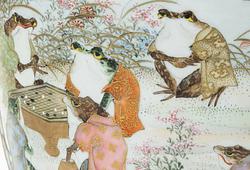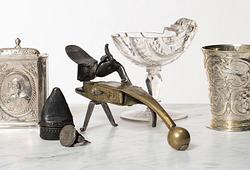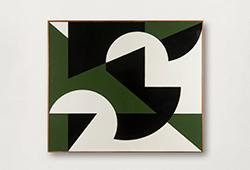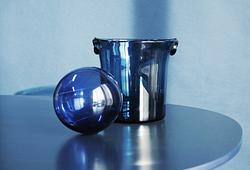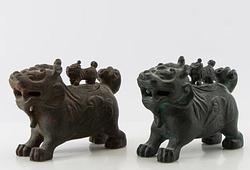Jue samt skål, brons. Möjligen Shang respektive Ming dynastin.
Juekroppen gjuten med ett inrikat band om livet som avbildar två stiliserade taotie masker, delade av vertikal falang respektive handtaget med buffelhuvud. Prominent snås, uppåtstående ståndare samt tre ben (bakre delen saknas. Höjd 20 cm. Skålen med rundade sidor på fot. Spår av textil på insidan. Diameter 16,5 cm.
Skador, delar saknas. Anlupna.
Proveniens
From the collection of Johan Adolf Drougge, 1867-1956). A Swedish M.D. at Karolinska Institutet, who served as a doctor at the Kronoberg regiment 1903-1910, and at the Göta lifeguards from 1910. He was also a portrait painter, and has been exhibited at Liljevalchs in Stockholm. He was a passionate art and antiques collector and started a fund for research called the Adolf Drougge stiftelse.
Utställningar
For other lots from this collection, see Bukowskis sale 645, lot 247. A west Anatolian "Lotto" rug, 17th century,
Litteratur
Litterature; see his home depicted in Svenska Hem i ord och bild 1926, page 233-243..
Övrig information
As one of the oldest vessel forms, jue were used and continually adapted over several centuries, enjoying a relatively long period of popularity. In the earliest forms of Chinese writing, the character for jue in oracle bone inscriptions depict the long legs, spout and upright posts of the two present jue, suggesting a distinct vessel form and function from very early on (as discussed by E. Childs-Johnson in The Jue and its Ceremonial Use in the Ancestor Cult of China, Artibus Asiae, vol. 48, No. 3/4, 1987).




